Bhutan – the country, not the gas *smiley smiling* . But where exactly is it? And wasn’t it a country which does not let travelers in, or only a limited number? How can you communicate there – the national language is Dzongkha. Only 237 000 people (less than the population of Bonn) speak it and there are at least 18 other languages used in Bhutan. Will it be like traveling in China 20 years ago when speaking with hands and feet really became real for me. Or maybe completely different?
Well, join us on our adventure through the little kingdom in the Himalaya and you will find out on all the questions above and be amazed as we were how different this world is over there…
Why and how to get to Bhutan
When reading about Bhutan, we found out that TV was only introduced in 1999, the first road got paved in the 1970s and that there is not even a single traffic light in the entire country (all of that is true by the way – there was a traffic light once in the capital Thimpu, but people decided that this is very non-personal, so they got rid of it again).
So why travelling to Bhutan? Somewhere we have seen pictures of a country with beautiful landscapes, architecture and culture. And there is the concept of Gross National Happiness as a governmental goal – so the idea was to go to this happy and beautiful country to experience it ourselves.
First question was how to get there. There is one international airport in the country: Paro. Flights arrive e.g. from Delhi in India (which is the easiest route to get there from Europe). The flight from Delhi over the Himalaya was beautiful – some clouds but we could see Mount Everest and Lhotse peeking out through the cloud cover. It is really hard to imagine that humans are able to ascend to these peaks and even more difficult to imagine there are long queues at the peak area with several hours waiting time and what tourism does to the environment. Just recently, Sherpas collected 11 tons of trash left behind (including four bodies).
Our arrival in the dragon country
But back to Bhutan: When approaching the country, we could see already from the windows an all mountainous area with no flat terrain. Only a handful of pilots have the license to land airplanes at Paro Airport. Uhh – we got to know why…. A relatively small valley surrounded by proper mountains – the valley of Paro – was our destination. We flew into the valley, did a sharp turn around one of the surrounding mountains and then down with the nose back into the valley for a perfect landing. Respect to the captain, this is not a landing for beginners. At the airport, it was perfectly fine to do a stroll on the runway – anyhow only a few planes land there every day. Bhutan Airlines has the dragon on its tail – Druk (dragon) is an omnipresent figure in the country. A super relaxed atmosphere from the first minute in the country welcomed us as well as the chatting and smiling Bhutanese people.
We got picked up by Tenzin, our guide, who welcomed us with an extra big smile. Very unlike for our travel style, we had a guide and in the beginning were not sure, if this would work out well not being really “independent”.
In Bhutan, it is necessary to have a guide and pay a quite considerable daily fee (250 USD per person) which includes basically everything like accommodation, food, guide, transportation, admissions. Unlike the neighbor Nepal, a hotspot for backpackers which unfortunately also has to deal with some downsides of the masses, Bhutan does not want to limit the number of tourists visiting, but keep the quality high (and with this also the prices to be honest).
Therefore, as a non-Bhutanese, you need to pick a travel agency (we used Bhutan Swallowtail and were really happy with it) to get the required visa. With that, they book you hotels, flights etc. and got us settled.
The somewhat funny thing is that we did not manage to pay anything before we came into the country, because the country is not connected to the international payment system. So with a corresponding bank it should have been possible, but after 5 attempts with different banks, cannot remember how many phone calls and emails with various people, we almost gave up to visit the country. But the travel agency offered to just come and bring cash with us. So they booked the flights for us and trusting that we will come *smiley smiling*
With an Indian passport you can just enter the country without visa or the need to travel with an agency or pay the daily fee. The reason is the friendship with India. Bhutan has only two neighbors: China and India (Nepal is not far but does not share a border). While India is a friend, China…. well – people are really afraid of their „big northern neighbor“ after seeing what has happened to Tibet for example…
First sightseeing just outside the airport
Directly from the airport, Tenzin suggested to drive up the mountain a bit to have a view into the valley we just landed in. Additionally there is the Paro Dzong with its watchtower – hosting a little museum for Bhutanese culture. A first glimpse into some of the unique aspects of the culture…. For festivals, Bhutanese use wooden masks for special dances. Every valley has a yearly festival where EVERYBODY is looking forward to the entire year and prepares for it in terms of cloths and everything. It is a little similar maybe to the wooden masks at the carnival in Basel, Switzerland. And the landscape indeed looks a little similar to the Swiss mountains.
“Local food” first attempt
We continued to Thimpu where we dropped our stuff at the hotel and went for some food. As a foodie *smiley smiling* I always want to eat local food and Thorsten is also up for every experiment. We can eat spicy food, so we asked Tenzin and Tashi (our driver for the whole tour) for some local food, chili not being a problem.
We got into a restaurant with other travelers and guides (from the same travel agency as it turned out) and the food was honestly anything but spicy and neither especially tasty. It was plain rice, meat, vegetables with a pinch of salt *smiley annoyed*
But somehow the guides seemed all to have disappeared for food and just had a beer with us. Surprised we asked what or where they had eaten. They said something like – well behind, some more local, spicy food. So we said, that this is exactly what we want to eat – not the tourist food. We emphasized once more that we are serious with “local food”.
Real local food
For lunch next day we were taken to a really local restaurant (only locals inside), where the menu was written on a little writing block cover and guests would decide and write what they want on one of the papers. A little like in some pizza places where you can “build your own pizza”. We of course had no clue what Paa (e.g. Shakam Paa, Dhangy Paa), or Datshi (e.g. Shakam Datshi, Ema Datshi, Shakam Shutam Datshi) is, but started exploring.
First thing to realize: The main ingredient is chili. And not a light one that is, but rather some super-hot stuff (thinking Thai food to be the most spicy on this planet, we started doubting and reconsidering that). However we enjoyed, survived and happily said that this is exactly the kind of food we would like to have from now on. This created also some proud happiness on Tenzin’s and Tashi’s side and later lots of culinary learnings on my side – yes, I cooked dinner with our hosts on this journey when we stayed over in farmhouses and was truly amazed by the boost of flavors you can create with a rather limited variety of ingredients.
The roads of Bhutan
Another fact of Bhutan is that there is literally no flat land. When the mountains end, there is India. In Bhutan, every street has endless curves and a maximum speed is maybe 70 km per hour if you are a good driver, really brave and the road is good. But the road is not good everywhere. Actually the main road through the country was a one lane (one lane in total, not per direction) for many years. Only in the 70s there was the first paved road. Before that, in 1958, the then Indian Prime Minister Jawaharlal Nehru and his daughter Indira Gandhi for example traveled by yak for a state visit. Recently, the main road through the country got a second lane (or to be precise, is getting a second lane because in parts the construction work is still going on). It is a big relieve to people because backtracking is not necessary anymore when there is traffic coming from the opposite direction. What sounds super normal for us to have multi-lane roads, is a big challenge in Bhutan. The mountains are steep, landslides are common phenomenon and building a road in such an environment requires huge efforts.
National sport, dress and more
Since flat terrain is scarce and archery or dart is the national sport and passion, people like to play it just at the side of a street. It is not uncommon to meet a group of (mostly) men from a village playing it for the entire day on a weekend. They are extremely good, shooting over long distances. For scoring, they get a colored band to count at the end of the day who the winner is.
Talking about national sport, it is worthwhile mentioning the national dress as well as the national animal. Bhutanese love their culture and want to preserve it – one way of doing, is to wear the traditional cloths whenever working, being in a temple or during any official occasion. For men, it is a kind of kimono with a belt and special folding technique allowing you to use the space at the belly like a backpack. You can carry everything in there, food, smartphone, water bottles. For women, it is a long shirt and a blouse/blazer in many beautiful colors. It really looks very nice and people wear it (almost) everyday, but for sure they would wear it whenever they go to a temple or any festive event.
The national animal is the Takin. It is a Caprinae, so familiar with goats and sheep and looks quite strange at the first glimpse. In Thimpu they used to have a zoo but decided then some years ago, that it is not fair to keep animals in fences, so they should be all freed. The Takins however decided not to go into the forests but back into the city (as they were used to humans) and this created quite a chaos. So they were put into fences again in a forest areal. Now school classes go there to see the national animal as this is in the wild a bit shy and many would not see it otherwise – and tourists come as well.
THE national events are the festivals. Every valley has one once a year in the Dzong (a fortress with governmental and religious buildings) and everybody is looking forward to it, planning what to wear and maybe counting the days like some kids do in our culture waiting for Christmas. We were really lucky to visit the Thimpu festival, one of the largest in the country with a couple of thousand visitors. It was an amazing cultural experience you can read more about in our next blog.
Did we make you curious about Bhutan? Leave us a comment…


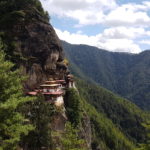
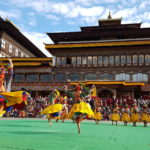

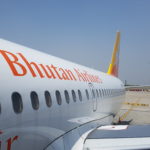
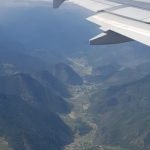
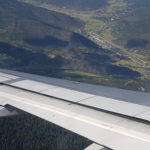
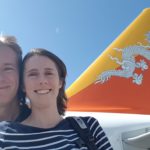
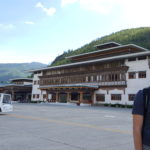
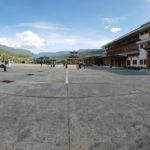
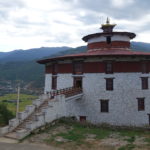
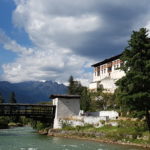
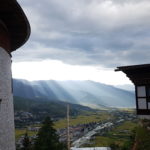
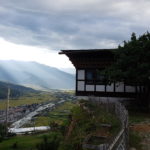
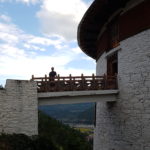
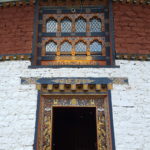
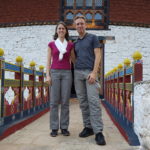
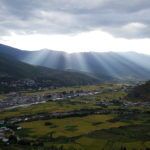
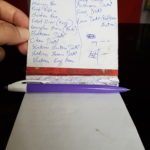
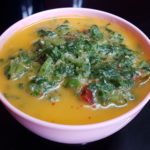

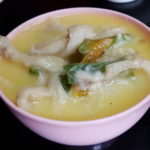

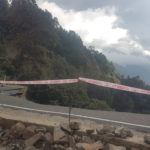
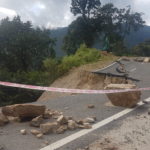
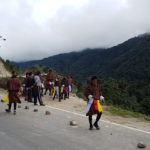
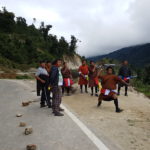
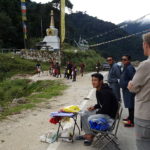
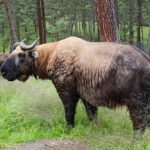
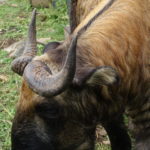
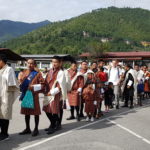
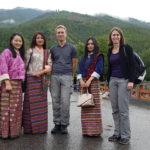
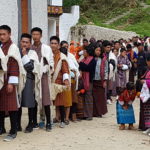
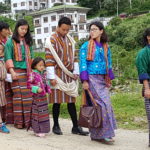
One thought on “Bhutan – First Glimpse and the reason why we decided to go”